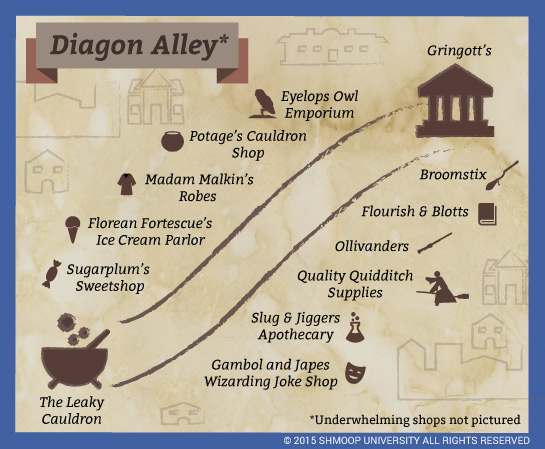Symbolism, Imagery, Allegory
Wands represent individual personality and character. Each magically talented person in the book has a wand tailored to fit his or her personality, and each wizard or witch's wand is an extension of the self. Remember how Harry spends so long in Mr. Ollivander's shop, trying to find the perfect wand? That's because every wizard needs a wand that meshes with how he/she works in order to produce the best possible magic. It's harder to do magic with someone else's wand, and even harder to do magic without any wand at all.

(Click the map infographic to download.)
Each wand in Ollivander's shop is completely individual, made with very specific magic elements, each resulting in a unique combination. For example, Harry's wand is holly and phoenix feather (phoenixes symbolize rebirth, which could show that he – and Voldemort – is hard to kill). Rowling herself explains:
"[H]olly has certain connotations that were perfect for Harry, particularly when contrasted with the traditional associations of yew, from which Voldemort's wand is made. European tradition has it that the holly tree (the name comes from 'holy') repels evil, while yew, which can achieve astonishing longevity (there are British yew trees over two thousand years old), can symbolise both death and resurrection; the sap is also poisonous." (source)
The fact that Harry chooses a wand with phoenix feather core in it shows how his path is already tied to Voldemort's, since Voldemort also chose a wand with the same core (or rather, the same wand also chose him).